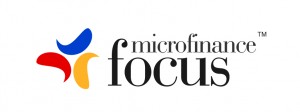Interaction: Emilie Goodall, Project Manager for Principles for Investors in Inclusive Finance at UNPRI
Microfinance Focus, November 30, 2012: Here at e-MFP, you’ve been presenting the work of the MIR Action Group, and been involved in a project working with academics and investors on responsible finance. What’s the progress so far?
The initiative came out of the MIR Action Group, one of the groups launched through the e-MFP, and chaired by Cecile Lapenu from Cerise. It seeks to test this thesis – the presumption within the microfinance industry that financial and social performance are ‘win-win’; that is, by increasing social return you can increase financial return too. This presumption need not be causative, just correlative. But while individual investors and the MIX have done analysis for a while on correlation between social and financial performance, we felt there needed to be more robustness in looking at the issue.
So there was an appetite to go further, and so we started by working along with MicroFinanza and St Andrews University. It seemed logical to use a statistician in Andreas Hoepner, and the project expanded to include data from Blue Orchard, Triple Jump, INCOFIN, Cerise, MicroFinanza, and Oikocredit.
The Principle for Investors in Inclusive Finance (PIIF) was involved at this stage because naturally this issue of whether in fact it is ‘win-win’ or instead a zero-sum trade-off is especially relevant to aims of PIIF, and correlation is a common question from the institutional investor. Intuitively, they feel it does matter, but not necessarily borne out in practice, but also now there is enough data merging and many more observations, and more alignment of these observations and the questions being asked because of the Client Protection Principles. So the time is right to give this issue this attention.
So PIIF put some money in, St Andrews got the NDAs in place, and e-MFP have taken it forward with additional funds. The aim is answering the question: “is there a business case for social performance?” and then we work out what it tells us. Now we’re at a stage where a number of control variables are being put in place, and we’ve had Planet Finance and MIX join too and we hope other ratings agencies will join also.
We’re aiming for a first report in the first half of 2013, potentially as an academic paper, and then in the second half of the year we will expand the remit beyond just client protection – which has been easier to start with because of the greater consensus surrounding client protection – to social performance.
So far, we can say that price transparency and privacy of client data appear to be non-negatively correlated with financial return measures. Obviously this is a preliminary finding, and we will be able to conclude more with more time and more data. What I will say now is that client protection ratings do matter for financial outcomes, though in varying ways, so the information is clearly valuable.
What would you like to come out of this?
The value of sharing information as a worthwhile goal in itself; and I would like this belief to be disseminated. The process itself of this project is beneficial. By sharing data, we create a database to better understand relationships between clients and MFIs, MFIs and MIV managers, MIV managers and end investors. But proving a causal relationship as opposed to a correlative one is unlikely – as is true in lots of science.
What are the key challenges to getting to this point, the sharing of valuable data? And how does PIIF fit in?
There are challenges in terms of the quality of the data; it is often very difficult when you have different rating approaches, different categorisations, MFIs reporting to multiple investors who are then reporting that data via this combined database. So it’s hard to construct a database where you can compare like with like. But despite these challenges, it has been extraordinary the level of cooperation we’ve received, and the great independence the researchers have been given, and the collective caution and prudence and patience in going through the data. The objective is a better understanding of whatever trade-offs and synergies do exist [between financial and social performance].
It’s important to remember that investors are not homogenous. Rich people, foundations, commercial institutions or DFIs: they have different approaches and it cannot be hoped for them always to align. What you do need instead is greater transparency on their different objectives and that is the push behind the PIIF; to have a framework that helps ultimate investors and MIV managers align their objectives.

